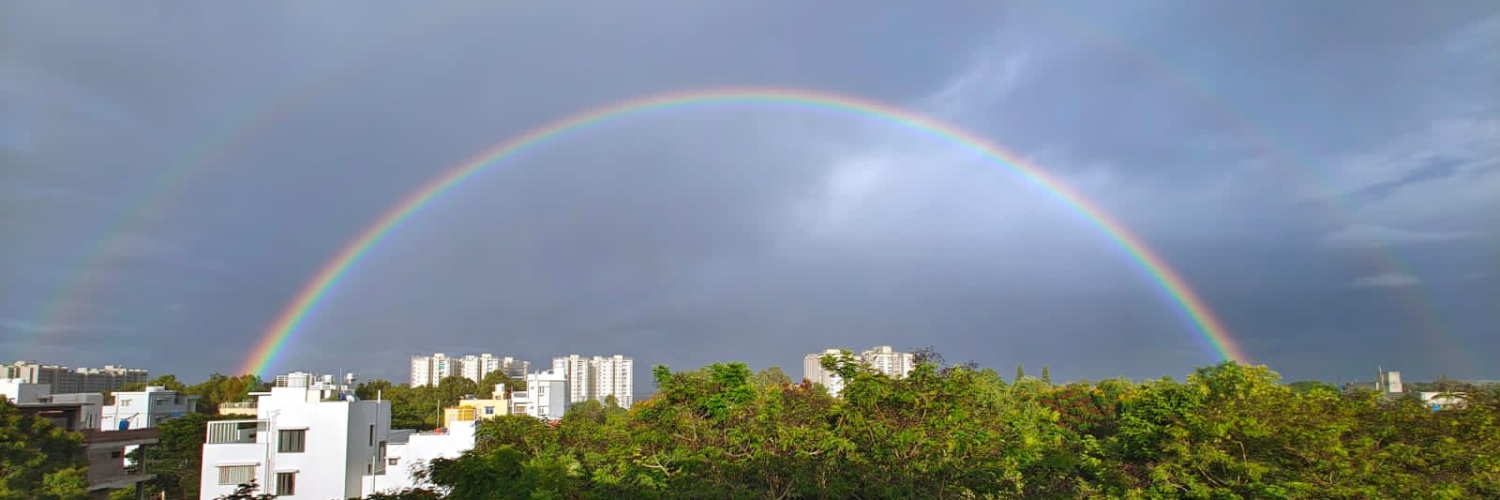
Anjana Badrinarayanan
@anjbadri
http://microgenomes.com
Now published @CurrentBiology. Happy to share latest work from the lab led by @ashamjos and @Adhikashreni1, describing replisome speed variation in Caulobacter! cell.com/current-biolog…
🚨“Ripping bacteria to shreds” 🚨 VCP/p97, a cellular AAA-ATPase, targets and then using its tweezer like action rips apart bacteria, protecting us from infections. A thread 🦠💥#MolecularMachines #HostDefense #cellularimmunity #microbiology @NatureMicrobiol
Out Now! Host AAA-ATPase VCP/p97 lyses ubiquitinated intracellular bacteria as an innate antimicrobial defence bit.ly/4jebHzK #Microbiology #Antimicrobial #Bacteria
🚨 Just out in Science: 2/3 of bacterial gene families have a preferred position on the chromosome—and natural selection put them there! science.org/doi/10.1126/sc… @HHU_de @ceplas_1
Delighted to share this. A novel H4 variant that modulates chromatin to mediate salt stress response. This mammoth work was driven to perfection by @VivekHariSunda1, a wonderful PhD student who also taught me. We report its CryoEM structure & unusual chemistry @NCBS_Bangalore 1/3
New Article: "An Oryza-specific histone H4 variant predisposes H4 lysine 5 acetylation to modulate salt stress responses" rdcu.be/eg0Zs An Oryza-specific histone H4 variant (H4.V) forms condensed, less stable nucleosomes, regulating the salt stress transcriptome.
🚀 Excited to share our latest work on Mrx6 and mtDNA copy number regulation, now available on @biorxivpreprint ! We uncover how Mrx6 and Mam33 interact with the Lon protease Pim1 to control substrate degradation. 🔬 Check it out here: biorxiv.org/content/10.110… #mitochondria #mtDNA
In our study in @ScienceAdvances, we reveal how ssDNA binding activates transcription factor PafBC, triggering the DNA damage response in #Mycobacteria. Read more: science.org/doi/10.1126/sc… 🔬 Cryo-EM structure 🧬 ssDNA-WYL domain interaction
When does a DNA polymerase degrade DNA? Read Akshaya’s latest work from the lab to find out more!
Akshaya Seshadri and Anjana Badrinarayanan @anjbadri @NCBS_Bangalore @TIFRScience show that #exonuclease action of replicative #polymerase gamma drives damage-induced #mitochondria #DNA clearance. A new mechanism of mtDNA clearance following damage. embopress.org/doi/full/10.10…
Happy to announce that our paper on systematically discovering peptides to inhibit protein-protein interactions in living cells is out now @PNASNews: pnas.org/doi/10.1073/pn…. @MITBiology @ScienceMIT @HHMINews See quoted thread on the updated preprint for details:
Excited to share our updated manuscript on FragFold, the massively parallel AlphaFold-based approach we’ve developed to discover protein fragment inhibitors at scale -- w/ @SassSeabass, @keating_lab, and @GeneWeiLiLab. biorxiv.org/content/10.110… (1/n)
Fun work on the regulation of the bacterial SOS response to DNA damage. Led by the fantastic @Aditya_Kamat96!
There's more to SOS response timing than the LexA repressor. In our preprint from the Anjana Badrinarayanan @anjbadri Lab, we uncover a new regulatory layer that imparts temporal structure to the bacterial SOS response. biorxiv.org/content/10.110…
Mitochondria consist of networks of cylindrical tubes, right? Not necessarily! - in our new preprint, @gavsturm.bsky.social investigates how mitochondria transiently adopt a beads-on-a-string morphology biorxiv.org/content/10.110…
This was an amazing collaboration, we had the luxury of years of great conversations with @WallaceUcsf and his team, as well as our other @HFSP partners @anjbadri and Johan Paulsson. Thanks for telling the story here, Wallace!
Mitochondria consist of networks of cylindrical tubes, right? Not necessarily! - in our new preprint, @gavsturm.bsky.social investigates how mitochondria transiently adopt a beads-on-a-string morphology biorxiv.org/content/10.110…
@felixrl_ took on a ~50-yr-old mystery in #Staph aureus cell biology and came out on top! Check out his paper on how #Staphylococcus aureus chooses its cell division plane, how it forms clusters, and why all this matters during infection... nature.com/articles/s4156…
Conflicts between the DNA replication and repair machineries promote cell death in Gram-positive bacteria biorxiv.org/cgi/content/sh… #biorxiv_micrbio
If you haven't already, check out the Hachiman phage defence system characterised by the @doudna_lab @CellCellPress. Inspiring work and scary 'phantom' cells (perfect for Halloween!) 👏 cell.com/cell/fulltext/…
Excited to be featured in a childhood favourite @TinkleMagazine! Thanks to @NCBS_Bangalore communications team for this super fun initiative.
🌟 NEW! 🌟 Our latest comic with @TinkleMagazine featuring Dr Anjana Badrinarayan is out now! Check out the comic and do let us know your thoughts in the comments below! #sciencecomics #womeninscience #womeninSTEM
Mechanism of DNA entrapment by the MukBEF SMC complex and its inhibition by a viral DNA mimic biorxiv.org/cgi/content/sh… #biorxiv_molbio
Huge thanks to @anjbadri and @nitish_dua3 for spotlighting our work in @embojournal ! 🙏🧬 Check out the full article here 🚀🔬 embopress.org/doi/full/10.10… #mtDNA #mitochondria
How do you find a needle in a genomic haystack? Yeast yields some answers here, thanks to Xless Agnès Dumont, Nicolas Mendiboure, @JSavocco, @djost_physbiol et al. Free here for 50 days, or very similar preprint here: x.com/aurelepiazza/s… Enjoy!
Online Now: Mechanism of homology search expansion during recombinational DNA break repair in Saccharomyces cerevisiae dlvr.it/TCFdY9
Super work from @ashamjos, @Adhikashreni1 et al on replisome speed variation in Caulobacter!
Delighted to share this new preprint from Anjana Badrinarayanan @anjbadri lab. By assessing replication dynamics at the level of single cells, we reveal the intricate relationship between nutrient status and rates of genome duplication in bacteria. biorxiv.org/content/10.110…